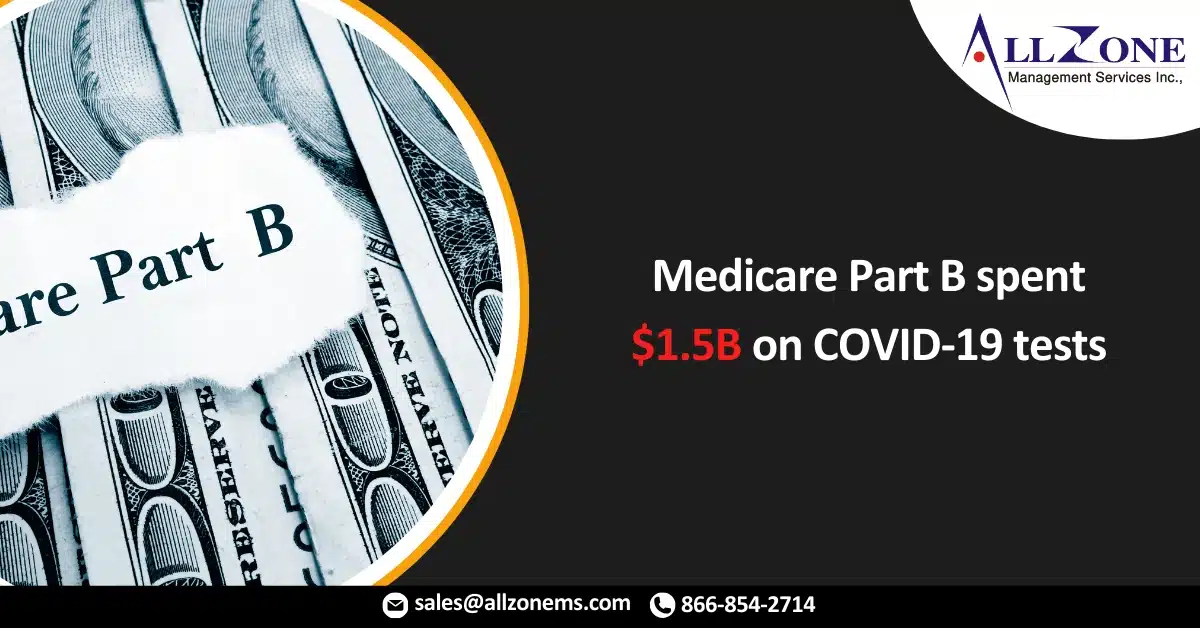Medicare Part B spending on laboratory tests ticked up to $8 billion in 2020, driven largely by new COVID-19 diagnostics reimbursements, even while spending on other types of tests declined, according to a new report released by the U.S. Department of Health and Human Services’ Office of the Inspector General.
In total, there was $1.5 billion in new spending on COVID-19 tests, a type of test that didn’t exist before the pandemic. That includes $1.0 billion on a rapid COVID-19 test procedure code, which was the number one test by spending.
Aside from COVID-19 tests, spending for all other tests as a group decreased by about $1.2 billion in 2020, a 15.9% dip from 2019, to $6.5 billion. The decline in spending was driven by a sharp decline in non-COVID-19 tests during the early months of the pandemic, as well as further reductions in payment rates for some of these tests, as required by the Protecting Access to Medicare Act of 2014.
WHAT’S THE IMPACT?
In 2020, Medicare Part B spent $1.5 billion on 25 unique procedure codes related to COVID-19 testing. This set of tests included antibody tests, high-throughput tests with shorter turnaround times, and panel tests that tested for COVID-19 and other respiratory diseases. Medicare Part B payment rates for COVID-19 tests ranged from $18.09 per test to $100 per test for high-throughput tests.
More than 8.4 million unique Medicare Part B beneficiaries received at least one COVID-19 test paid the Clinical Laboratory Fee Schedule (CLFS) in 2020. On average, each unique beneficiary received two COVID-19 tests paid for by Medicare Part B. Beneficiaries may have also received COVID-19 tests that were paid through other means, such as community testing programs.
Overall, though, Medicare Part B paid for fewer tests in total in 2020 than in 2019, driven by a sharp decline in testing in the spring of 2020. For example, the number of non-COVID-19 tests administered in April 2020 was 53% lower than in April 2019.
During this period, large segments of the U.S. economy, including parts of the healthcare sector, shut down to limit the community spread of COVID-19. Non-COVID-19 diagnostic test volume declined dramatically in spring 2020 before returning to more typical utilization patterns in the summer.
The top test by payments was a rapid COVID-19 test – procedure code U0003. Medicare Part B paid $1.02 billion for more than 10 million of these tests. This marks the first time a new test entered the top 25 as the number one test since OIG began monitoring spending on the top 25 tests in 2014.
The number two test in 2020, the comprehensive group of blood chemicals test, had been the top test since new payment rates took effect in 2018. Utilization of this blood chemicals test declined by 10%, from 42.2 million in 2019 to 37.8 million in 2020, and payments declined by 18%.
Spending on 20 of the 21 non-COVID-19 tests in the top 25 tests decreased from 2019 to 2020. This set of tests includes routine screening tests that allow providers to identify potential issues in patients who would benefit from early intervention but may not have symptoms that require an urgent diagnosis.
Only one non-COVID-19 test in the top 25 increased from 2019 to 2020: a microbiology test that uses nucleic acid to detect an infectious agent. Volume increased by 92% and spending increased by 78%. This test was likely used in conjunction with COVID-19 tests.
The decline in volume for non-COVID-19 tests raises questions about the potential impacts on beneficiary health. The decline in testing coincided with the height of COVID-19-related economic shutdowns, which affected many parts of the healthcare sector. If Medicare beneficiaries delayed or avoided preventative healthcare services, they may not have received important tests, such as cancer screenings, that are medically necessary but not urgent. Research suggests that delays of such lab tests could have a long-lasting impact on the health of some Medicare Part B beneficiaries.
THE LARGER TREND
The decline in test volume is consistent with Centers for Medicare and Medicaid Services guidance on how facilities could respond to the evolving pandemic. As the pandemic began, CMS issued guidance in April 2020 that it developed in collaboration with medical societies and associations. This guidance presented a tiered framework to prioritize services for urgent lifesaving situations where a lack of in-person care could result in patient harm.
For the lowest acuity tier, the guidance recommended that providers consider postponing non-emergent care and preventative-screening procedures in order to limit exposure to COVID-19 for patients and providers.
Two months later, in June 2020, CMS issued additional guidance on how facilities could safely resume non-emergent care that had been postponed. The number of non-COVID-19 tests that Medicare Part B beneficiaries received in June 2020 was 7% higher than the number of tests administered in June 2019, but the monthly volume of non-COVID-19 tests did not continue to increase during the second half of 2020. This suggests that many Medicare beneficiaries did not make up the tests they may have missed in the spring during the rest of 2020.
For More Information: medicare part b spent 15b covid 19 tests 2020

